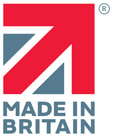How can modern business information software (ERP) enable an organisation to maximise profitability, cash and product quality while reducing stock, overhead, delivery and space requirements?
One method integrates lean manufacturing techniques to provide a management toolset supporting both traditional (push) and modern (lean, pull) manufacturing methods.
Traditional push methods include MRP; re-order points, and optimum order quantities. Modern pull manufacturing methods include the utilisation of kanban, backflushing component stock, back to-back orders for single piece flow, etc.
The flexibility present in Integrated Lean (push/pull flexibility) combines methodologies and allows concurrent use of traditional and modern techniques.
The key to Integrated Lean is providing kanban signals throughout the supply chain by utilising the Internet to communicate instantly from the shop floor. Upon product consumption, the modern ERP software communicates material requirements directly with the supplier.
Place your organisation on target with ERP software that integrates lean techniques providing a management toolset supporting both traditional (push) and modern (lean, pull) manufacturing methods.
Integrated Lean extends the boundaries of the production floor to coordinate stock for synchronised single-piece flow through the supply chain.
Current manufacturing practices have been made cumbersome by the imposition of data recording activities required by manufacturing systems through the release, issuing, and expediting of the infamous work order.
An Integrated Lean system utilises full containers to signal the completion of the product and backflushes the component material within the ERP software.
Additionally, the Integrated Lean system (pull) can work simultaneously and in harmony with your MRP planning (push) to schedule your shop floor bottlenecks so that the bottleneck becomes the heartbeat (pull) for the remainder of the plant. Although originally scheduled, the bottleneck may use the Integrated Lean backflush routines as well!
An ERP software integrated with lean techniques provides a management toolset which allows the end users to achieve profitability for the company by being flexible enough to support both traditional and modern manufacturing methods.
Defining the Lean Environment
In order to understand Integrated Lean, we must broadly define a Lean Environment to have the following five attributes:
- Focus on product value – a keen product value to the consumer and identifying value-added activities exposing non-value-added activities
- Elimination of waste - activities that utilise resources but do not create value must be eliminated
- Continuous improvement and standardisation - ongoing tenacity towards perfection and elimination of process variation in all aspects of the company utilising such tools as Total Quality Management, Six Sigma, World Class, Kaisen, Poka- Yoke, ISO 9000, etc.
- Driven by customer need - all activities are driven by customer needs without artificial boundaries (minimum re-order points, quality control checks, and clerical data entry and management approval procedures) put into place:
- pull - information and material are pulled based on customer demand
- flow - sequencing of events, removing departmentalised boundaries
- Culture of change - the development of a culture which embraces continuous change with “can do” attitudes is the most important aspect of the Lean Environment
One point that must be made clear is that a lean environment is not a stock control methodology or a special manufacturing method - it is a culture that embraces the above five attributes that must be used in the office as well as the shop floor.
Cash Is King
Whatever your current environment, your first question will be why to go through the pain and struggle of changing your environment in order to become lean. Why must your company select and pay for an enterprise solution such as WinMan? The answer is simple - profit. Profit is not a dirty word; the goal of any company must be to make money in order to sustain itself.
Profit is seen as cash and traditionally cash gets eaten by stock as companies grow. The most exciting result for those companies starting down the road to a lean environment is an influx of cash in the bank as stock turns increase due to lean strategies.
For example, a traditional manufacturing company starts on the lean journey and utilises the Integrated Lean toolsets within WinMan. It is very realistic that currently, their stock turns may be 2-3 per year and by implementing a lean environment they consequently move their stock turns to 10. Not only is this realistically achievable, but doing so generates positive cash flow as a reduction of not having to put cash into stock, plus annual savings per year in interest charges for debt services to carry the stock.
Lean Environment
- Product value
- Elimination of waste
- Continuous
- Improvements
- Standardisation
- Customer needs
- Culture of change





.png?width=137&height=137&name=MicrosoftTeams-image%20(4).png)